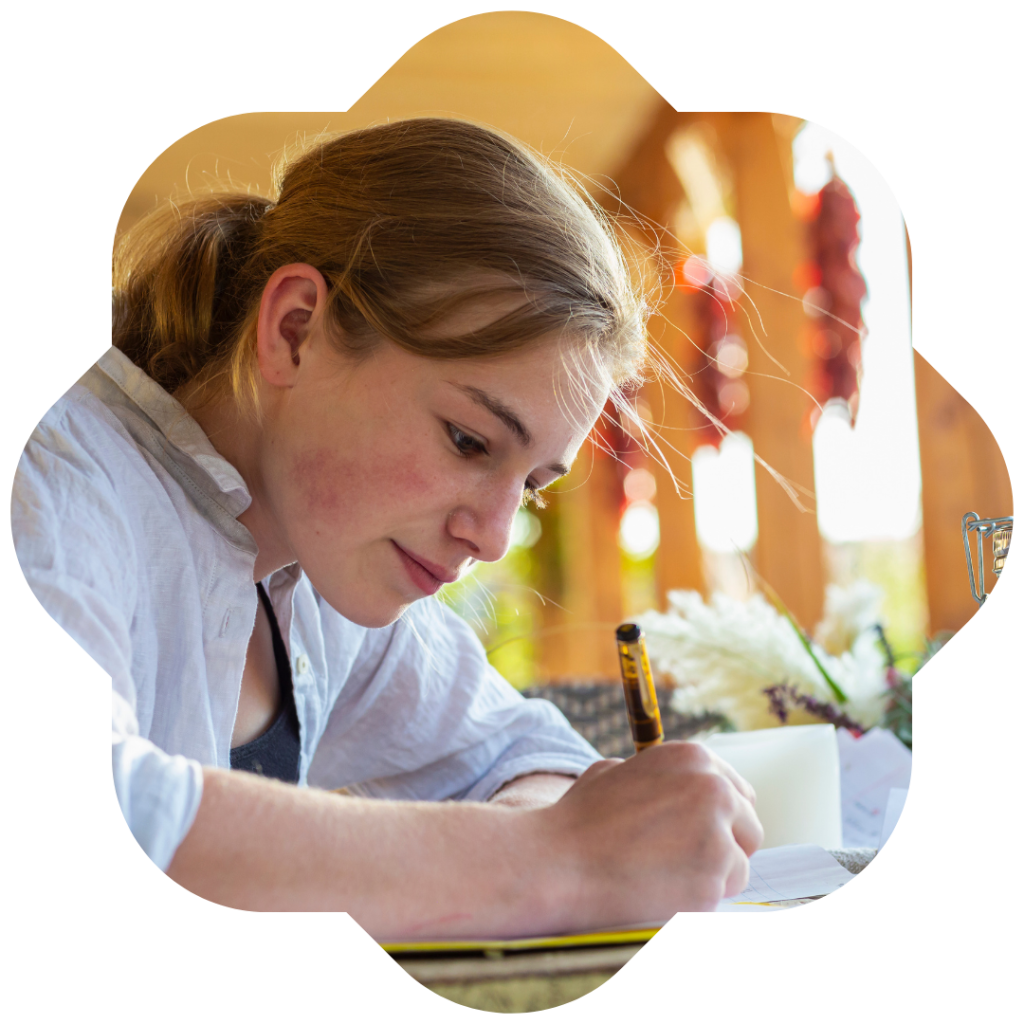
It’s that time of year again—state testing season—the unavoidable rite of passage that sneaks up like a pop quiz you definitely didn’t study for.
The best way for students to make these tests less dreadful is to tackle them head-on with the right game plan.
So, let’s ditch the last-minute cramming, lower stress levels, and boost confidence with stress-free study tips that actually work.
Mindfulness Techniques
Mindfulness techniques offer students a mental refuge amid busy study sessions. Focused attention exercises, like mindful breathing or progressive muscle relaxation, help reset frazzled nerves. Imagine releasing tension in one muscle group at a time—it’s like untying a knot gradually. This reduces anxiety and gives the mind space to breathe.
1. Open monitoring
Open monitoring encourages students to observe thoughts without getting caught up in them. This practice nurtures balance, empowering students to recognize and release thoughts, especially before a big test.
2. Brief Mindful Movement
A gentle walk or stretching can enhance focus and blood flow. These movements ease physical tension and foster a sense of accomplishment, revitalizing students for more studying.
3. End of day Reflections
Journaling about what was learned and how it felt can reinforce retention and provide closure. This becomes a conversation with oneself—acknowledging accomplishments and offering self-encouragement.
These techniques don’t just prepare for tests; they build clarity and resilience into daily habits, helping students approach challenges with a more balanced perspective.
Study Environment Optimization
Creating an optimal study environment can significantly enhance focus and information retention. It’s about crafting a personal space that nurtures concentration and learning.
4. Decluttering
Start with decluttering. A clean, organized desk symbolizes a fresh start for the mind, free from distractions. Each item put away opens up mental space for clarity and focus.
5. Incorporate Lighting
Lighting is crucial. Natural light is ideal, so placing a desk near a window can be beneficial. Whether it’s sunlight or a soft lamp glow, proper lighting reduces eye strain and maintains alertness.
6. Minimize Distractions
Minimizing distractions is vital in our tech-driven world. Consider putting phones on “do not disturb” mode and silencing notifications. Encourage single-tasking by setting specific times for breaks when technology can be used.
7. Aesthetic Personalization
- Personal touches can enhance the environment. Adding plants can refresh the space and purify the air. For some, background sounds like instrumental music or nature noises can aid concentration.
- Remember that an optimized environment aligns with individual needs. It might involve colorful pens for one student or a particular scent for another. These elements aren’t just decorative—they’re key components in creating a conducive learning space.
- By thoughtfully designing their study area, students create a sanctuary for learning. This personalized space becomes more than just a location; it’s a foundation for knowledge and growth.
Time Management Strategies
Effective time management is essential for a balanced and stress-free approach to studying. By viewing time as a helpful guide rather than an adversary, students can navigate their academic journey more smoothly.
8. Personalized Study Schedule
Creating a personalized study schedule can transform time management into a tailored roadmap. This plan ensures all subjects receive attention, promoting balance and retention. Consider it a playlist of focus, with each time block dedicated to a specific task or subject, interspersed with moments of relaxation to prevent burnout.
9. Incorporating Variety
Incorporating variety into study routines can maintain engagement. Switching between subjects or types of tasks keeps the mind alert and interested. Including group study sessions can add a social element, making the process more enjoyable and less isolating.
10. Time Management
By approaching time management thoughtfully, students can create a harmonious study routine. This balanced approach becomes a supportive structure, helping students progress towards their academic goals with reduced stress and greater satisfaction.
11. Integrating Mindfulness
Incorporating mindfulness, optimizing study environments, and managing time effectively can transform the academic experience. These strategies cultivate clarity and resilience, helping students view challenges as opportunities for growth and approach their studies with a balanced, positive mindset.
12. Exploring Industry Valued Credentials
For students looking to enhance their career readiness, exploring industry-valued credentials can provide valuable skills and certifications recognized in the workplace.
13. Use the Pomodoro Technique
This valuable tool maintains focus and motivation by dividing study time into:
- 25-minute focused work sessions
- 5-minute breaks
- A longer break after four cycles
Stress-Free Study Tips with Kids on the Yard
At Kids on the Yard, we help students incorporate these stress-free study habits into their daily routines. Our expert educational team is dedicated to making education as accessible as possible with our free daily articles and tips.
Explore Related Articles for More Stress-Free Study Tips:

At Kids on the Yard, we help your child find their learning style and create a learning program tailored to their unique interests. Our 1-on-1 customized learning programs help students prepare for state testing with confidence while developing lifelong learning skills.
Stress-Free Study Tips for State Testing FAQs:
What are some stress-free study tips for state testing?
Stress-free study tips include mindfulness techniques like deep breathing, optimizing your study environment, and using time management strategies like the Pomodoro Technique to maintain focus and prevent burnout.
How can mindfulness help with test preparation?
Mindfulness techniques, such as progressive muscle relaxation and mindful breathing, reduce anxiety and enhance focus. They help students stay present and manage stress before and during state testing.
What is the best way to create a distraction-free study environment?
A clean, organized space with proper lighting and minimal distractions fosters concentration. Using noise-canceling headphones, calming background music, and removing digital interruptions can help optimize focus.
How can the Pomodoro Technique improve study efficiency?
The Pomodoro Technique involves 25-minute focused study sessions followed by short breaks. This method enhances concentration, reduces fatigue, and improves knowledge retention for state testing.
What role does movement play in stress-free studying?
Incorporating brief mindful movement, like stretching or walking, increases blood flow and focus. This helps reduce physical tension and keeps the mind refreshed for more effective studying.
How does journaling enhance memory and reduce stress?
Writing down key concepts and personal reflections reinforces learning and provides a sense of closure. Journaling about study progress can also boost confidence and motivation.
Why is a study schedule important for stress-free test prep?
A structured schedule ensures balanced study time across subjects, preventing last-minute cramming. It also promotes a steady, stress-free learning pace leading up to state testing.
How can students stay motivated while preparing for state tests?
Breaking study sessions into smaller goals, rewarding progress, and incorporating variety—like switching subjects or study methods—keeps motivation high and prevents burnout.
What are the best ways to reduce anxiety before test day?
Practicing relaxation techniques, getting quality sleep, and maintaining a positive mindset can alleviate pre-test anxiety. Reviewing notes calmly instead of cramming also builds confidence.
How can industry-valued credentials benefit students beyond state testing?
Pursuing certifications in relevant fields enhances career readiness by providing skills recognized by employers. These credentials can open doors to internships, jobs, and academic opportunities.


